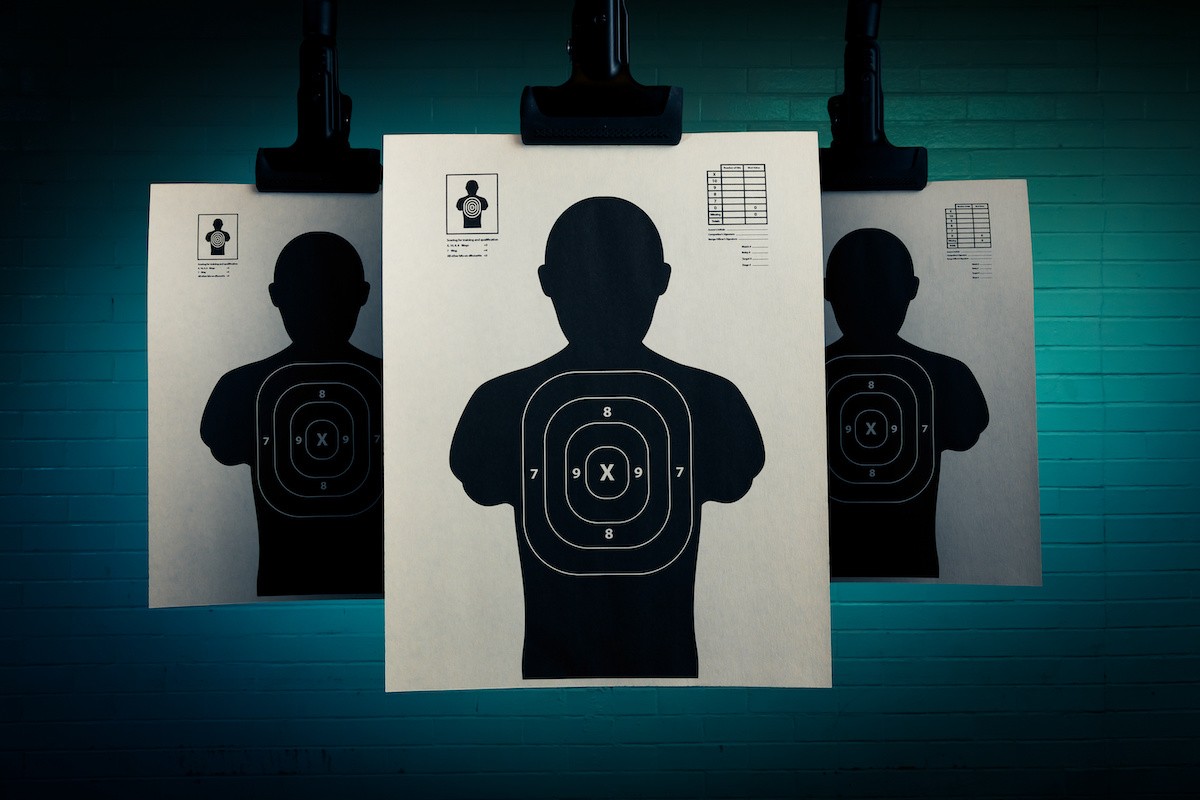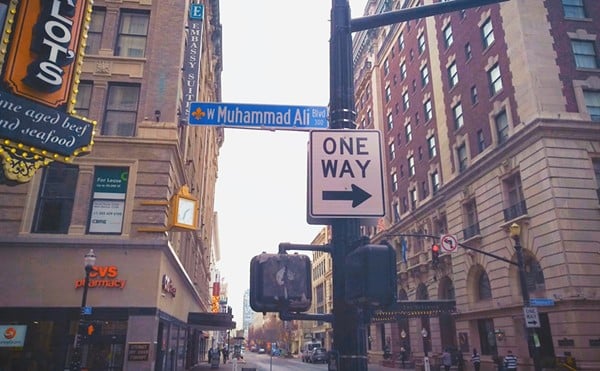It’s a Tuesday morning in January and I’m following a man I’ve just met down a corridor in his home, my right hand holding onto a replica Glock 19 at my hip because I don't have a holster and tucking it into my jeans seems unsanitary given it’s a shared gun. I’m telling myself not to pull the gun unless I absolutely have to, but I already have a gut feeling about how the encounter is going to end.
I was told I was responding to a complaint about potential child abuse and the potential production of child pornography. There wasn’t a warrant, so I was doing a “knock and talk,” an investigatory tactic where officers speak with the subject of a complaint or crime tip, but do not have authority to enter the residence without invitation or probable cause (e.g. there is visible evidence of a crime).
I probably would have elected to stay at the door and talk to the man there as that seemed safer, but I only have so much control over the actions playing out on the screen in front of me; firearms training simulators like this one are immersive and technologically stunning, but don’t exactly turn you into a video game character with complete free will.
In the wake of deadly incidents, law enforcement agencies across the country often highlight the split-second decisions officers have to make in stressful, adverse environments. Simulators like this one aim to replicate those conditions.
The simulators aren’t just shoot-or-don’t shoot: they are complex, giving instructors the ability to affect the outcome of a scenario based on what the officer (or in this case, reporter) is doing. That means if you give orders to somebody on screen to put their hands up, or drop a weapon, they might actually do it. Or, your actions could potentially escalate tensions with the pre-recorded actors on screen.
Covering law enforcement agencies and the criminal justice system, I often write about people who have had the police draw guns on them, as well as the effects and aftermath of incidents where police use force. How, why, when and where officers use force is at the crux of the debate over policing here in Louisville and in America as a whole. As such, I always wanted to try one of the simulators to see how I would fare and get better insight into what I write about. And recently, Louisville’s FBI Field Office gave me (and several other Kentucky journalists) the opportunity to try theirs out.
As someone who has been on the other side of a gun a number of times in a previous life — reporting in the Middle East — and who has had to deal with all the shit that comes with that, I went into my simulation scenario intent on not drawing my weapon unless I absolutely had to. Mentally, I drew some red lines: a person having a weapon in hand, a person clearly reaching for a weapon or, as we lacked less-lethal options like Tasers, a person who refused to comply with orders for surrender or arrest (if that was deemed necessary). I was less certain about what to do in many of the infinite gray areas that exist in life.
If I had to not only draw, but use force, I told myself I would fire as few shots as possible, knowing that bullets can pass through walls and bodies and hit other people (police forces in America are commonly taught to keep firing until the threat stops).
We weren't allowed to bring in recording devices, and it was dark in the room, so I wasn’t taking notes. That is to say, I am relying on memory, which is imperfect, and notes I jotted down in the hours after going through the simulation.
On the screen, the door to the home opens and before I can get any words out of my mouth — I still haven’t fully wrapped my head around the concept of being able to speak to the character on screen — the man invites me inside and the camera starts gliding down the hallway.
I start off with some light, neutral banter, things like “how you doing today, man?” and “everything good? Just seeing what's going on.”
In retrospect, I can hear the “Do you know why I pulled you over today?” of a cop’s voice in my own vagueness, but I was, after all, playing a part and trying to start with a path of least resistance.
We walk into the living room and the man takes a seat on the far-left side of a couch, sliding down behind a TV dinner tray that has a small bowl of fruit on it.
He starts talking, but it’s hard for me to concentrate. I went into the situation knowing shit was likely to go down and I really don't like where he’s sitting or how his hands are below the tray, making it hard for me to see them (and if he's trying to reach for something).
I ask him to move, still being polite.
“Hey man, can you do me a favor and just scoot a little bit to your left?” I offer.
He stays put, still talking, becoming a little agitated, saying he doesn't hit his kids. I try to calm him, saying I’m not accusing him of anything: we got a call, I’m just seeing what’s going on.
I still don’t feel good about where he’s sitting, especially since he didn’t move, so I give a firmer order.
“Listen man, I need you to move to your left away from that table. Okay?” I say, trying to interrupt him as he is speaking.
At this point, he is pissed. I think he says something about how he spanked his kids but that’s not hitting them, but honestly everything moved pretty quick (and when you’re told you are anticipating potential violence, like in these trainings, it can be hard to soak in all the details). He balls up his hand and slams it against the table in anger. I involuntarily tighten my grip on the pistol that’s at my hip.
Then, he grabs a small knife that had been sitting on the table next to the fruit bowl (which I hadn’t seen) and lunges at me.
I raise the gun from my right side, sliding my index finger down from where it was resting on the pistol’s frame to the trigger as it came up in front of me. When I see a red dot on his face through the mounted sight, I pull back on the trigger. It’s all over in what must have been a second.
I don’t know if I hit him or not; the scenario ended before my shot registered in the system. I was told I would have been stabbed.
With my gun still “holstered” in my hand at my hip, I’d lost the reaction-time battle. But I also didn’t feel good about pulling a gun on a person just because they were acting weird and agitated in response to a cop coming to them about still-unfounded allegations. If I’d had the option of a less-lethal weapon like a Taser, maybe I would have felt more comfortable drawing once they crossed the line into being more verbally aggressive. I also questioned why the officer entered the home solo, even with the invite, and why the agency did not instead do some more investigation and secure a warrant instead of sending me there on what turned out to be a deadly fishing expedition.
The next scenario was taken by a local TV journalist and challenged the bounds of believability.
In it, she had just conducted a search for a male subject in a case when a neighbor approaches, saying the person was at their home and had previously harassed and stalked her. The neighbor, a woman wearing only a white towel, lets the officer into her backyard through a gate and guides them over to a covered hot tub that sits against the home. Next to the hot tub, an exterior wall of the home runs parallel with a wooden fence, creating a narrow alley of sorts. In that alley is a man maybe 30-ish feet away, facing the home. His hands aren’t visible, but he appears to be reaching up on the wall of the house doing something.
The reporter focused on the man, quickly drawing her weapon and demanding to see his hands. As this was happening, the woman in the towel who first approached police took a seat up on top of the covered hot tub and was running her mouth off about something — I think, if I recall correctly, encouraging police to arrest the man or asking why they weren’t taking action.
Then, as the reporter’s attention remained focused on the alleged suspect in the alley, the towel-clad woman, for whatever reason, pulls out a semi-automatic pistol and blows away the cop in a fusillade of rounds.
Running the video back, we were shown that a pistol was resting in a little cubby next to the hot tub, although we were also told that pretty much everyone misses that.
In another scenario, a presumably off-duty or plainclothes officer at an empty restaurant is confronted by a man trying to rob them at gunpoint after they finished their meal.
All five scenarios we ran through ended in violence.
The goal of the scenarios seemed to be multi-fold: to show the importance of being aware of your surroundings, to replicate “tunnel vision,” to follow how quickly a situation can turn deadly, and to show that you can’t write anyone off as a threat. In short, the scenarios I saw were about officer safety, showing ways in which you or other officers could die if you weren’t careful.
I was told that, when the simulator is used by the Louisville FBI Field Office, agents run through many scenarios where force is not used and where everything is resolved peacefully. And as a tool to show officers how to avoid deadly force in challenging, stressful circumstances where there’s a lot going on, it’s easy to imagine how such technology could be helpful.
As an aside, it is worth pointing out that the FBI is involved in relatively few shootings compared with police departments. The FBI’s law enforcement activities that bring it into contact with the public are generally planned-out raids — its agents are not out on the streets running traffic stops, responding to domestic disturbance calls or any of the other things that result in local police departments having frequent contact with the public.
However, taken by themselves, exercises like the one involving the woman in the towel seem to be the kind of training law enforcement experts and people calling for reform have warned about as teaching police to view everyone who is not them — even those asking for help — as a potential threat.
That kind of possible, sure, but extremely unlikely scenario is not a one-off.
In a documentary made last year by Frontline PBS and The Salt Lake City Tribune, journalists following police training in Utah witnessed a live-action roleplay scenario in which a woman called police and said her husband and son shot themselves. When police arrived, she stabbed an officer and her husband woke up (turns out he wasn't dead!) and opened fire on police. The documentary said most scenarios the journalists observed ended in force being used.
In a protest plan I obtained under Kentucky’s open records law last year, Louisville Metro Police Department officers were warned that wheelchair-bound people, children, elderly people and others considered “non-threatening” could be recruited by violent agitators to serve as human shields. That same plan warned officers that protesters might disguise themselves as police and attack other protesters to fabricate allegations of police brutality.
Are these things possible? Again, yes, but in the way an immeasurable number of things are technically possible. However, they seem extremely unlikely.
And when everyone is viewed as a potential threat, it acts as a justification for force for officers.
When LMPD investigated an officer for repeatedly punching a protester in 2021, the officer justified his actions citing officer safety and talked about how he feared the hostile crowd around him could attack, potentially forcing him to use deadly force. The crowd around him was a well-known 60-year-old Louisville lawyer, his 15-year-old daughter, a small boy no older than ten, a small young woman, and a middle-aged woman who was filming on her cell phone.
The US Department of Justice’s damning 90-page report on LMPD released earlier this month found that “officers routinely use force disproportionate to the threat or resistance posed. Officers use force simply because people do not immediately follow their order, even when people are not physically resisting officers or posing a threat to anyone.”
The DOJ also found that Louisville officers “unnecessarily escalate” encounters and fail to properly gauge the threat level being presented by individuals, which leads to excessive uses of force.
And yet, even after reading the DOJ report, if I did that training simulator scenario again and was trying to “win” it or come out alive, I would probably pull my gun a lot sooner, at an early sign of non-compliance or agitation. Because in that particular scenario, I was shown that force or the threat of force was the only way to come home alive.






